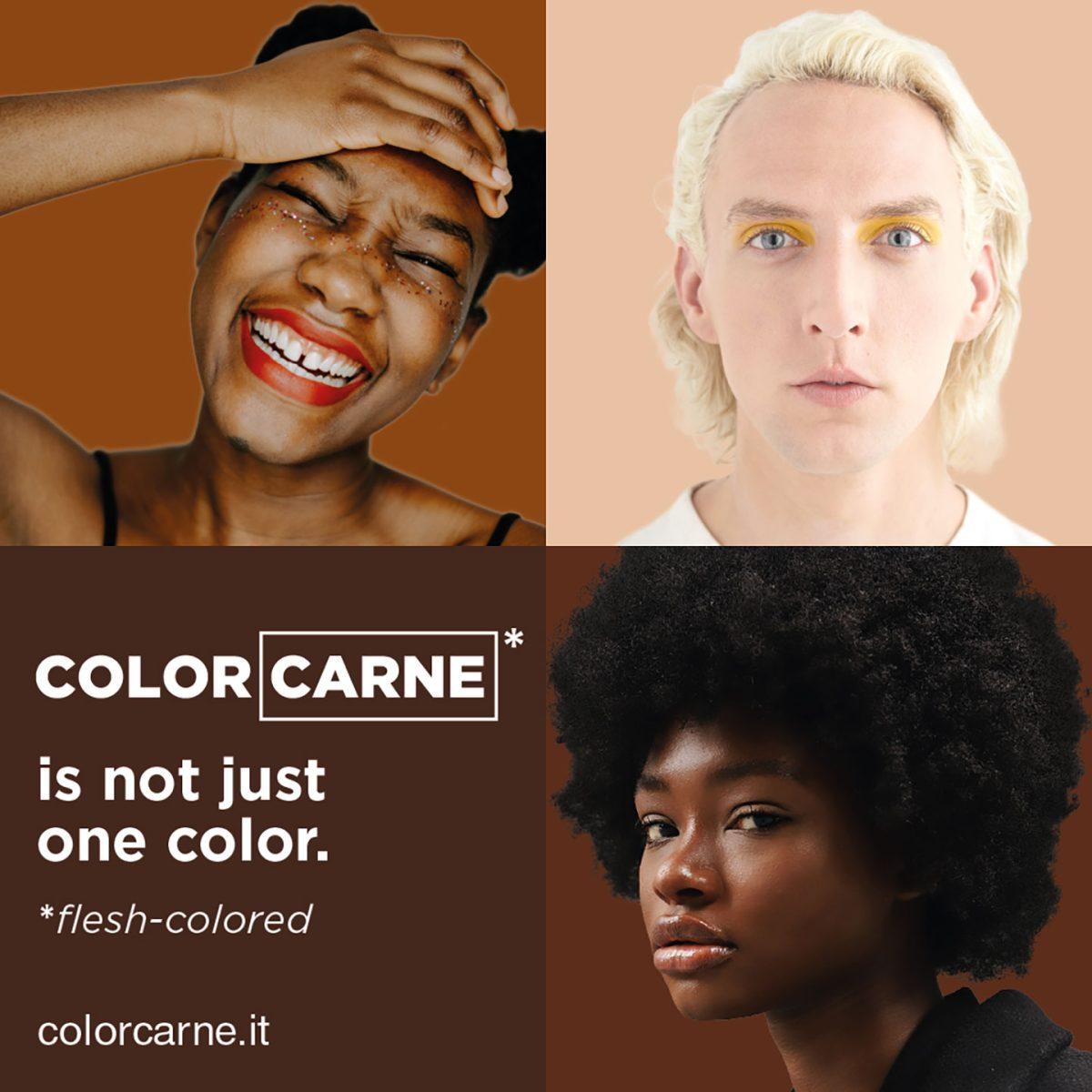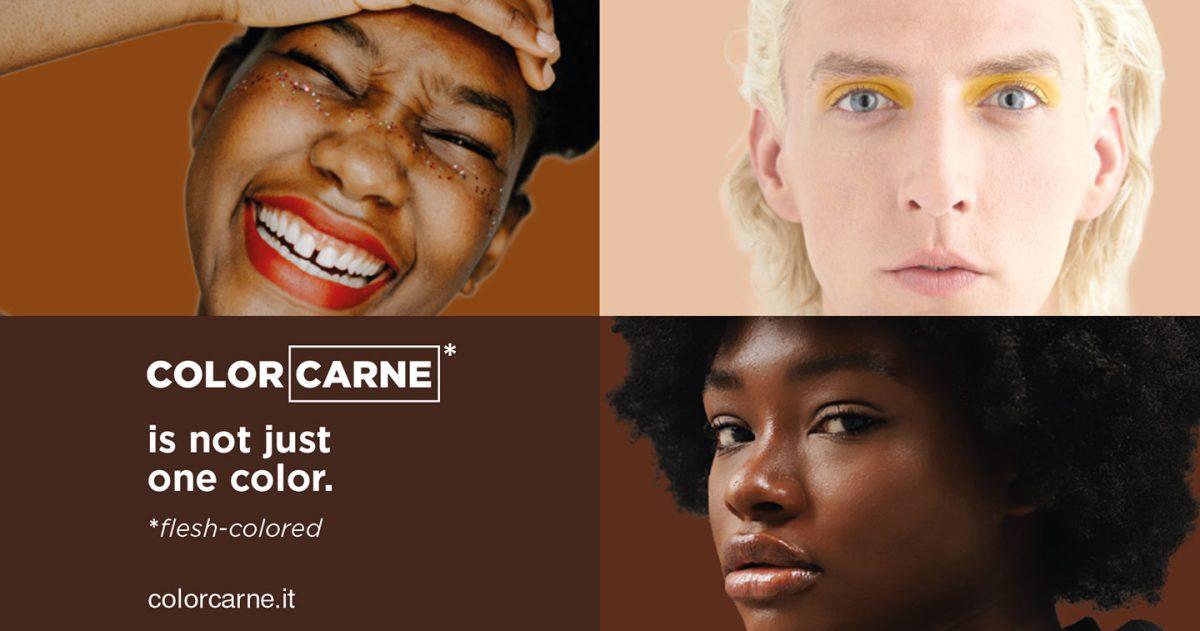PRATO, ITALY — How can we define the color “flesh”? A question as simple as this can get answers easily and quickly. Some will say, “It’s pink, light beige, the nude effect.” Even the Italian dictionary says it is a “light pink color, similar to that of human flesh.”
Is the color of human flesh limited to just pink?
This marks the start of the Color Carne advocacy campaign—designed to bring attention to issues related to skin color and respect for everyone’s differences.
The creators of this project are the strategist Giuditta Rossi, who happens to be black, and the storyteller Cristina Maurelli, who happens to be white. They both work on corporate projects for Bold Stories and one day they found themselves talking about color. At this point they first realized, somewhat to their surprise, the absurdity of the term Color Carne and so they decided to do something about it in Italy, by involving their friends and colleagues.

The campaign is designed to “change the color of flesh-colored (nor are “naked” and “natural” a solution) and it is based on the sharing of cards that feature original images and graphics, which can be found at colorcarne.it. In addition to a colormeter with all the colors of humanity, the site also features case studies and tools that show how these issues are dealt with around the world, in assorted sectors, including publishing, products and artistic projects. By sharing this material, the Bold Stories team hopes to provide both inspiration and more in-depth knowledge.
The idea that flesh-colored means “pink” presupposes, often subconsciously, that a white person’s skin color is the norm. Color Carne is designed to show that these concepts, which may seem inoffensive, particularly in terms of language and visual representation, can in fact hide bias, prejudice and discrimination, and that it doesn’t take much to expose them and change people’s point of view. It’s an invitation to challenge standards, to ask questions and, if those standards no longer relate to us, then to act for change.
“In this case we are talking about discrimination in terms of skin color,” says Giuditta Rossi, “but the same can be said of all the groups that are under-represented. Color Carne can become a meeting point for people who want to build a society that enhances diversity and where everyone can recognize themselves.”
“Our project can become an opportunity to imagine a different world and a different way of thinking, talking and even doing business,” adds Cristina Maurelli. “Biases, precisely because of their cultural nature, can affect everyone and it’s important that we don’t blame anyone, but that we become aware of the situation and that we decide to change.”
In dealing with issues like this there’s a tendency to play down the problem or to consider it to be insignificant. It is, however, by modifying these false certainties that we can change things.
The campaign also aims to raise awareness in Italy, not only among people in general, but by inviting publishers and brands to take a small but important step, by changing their language and perhaps even thinking about more inclusive products.










